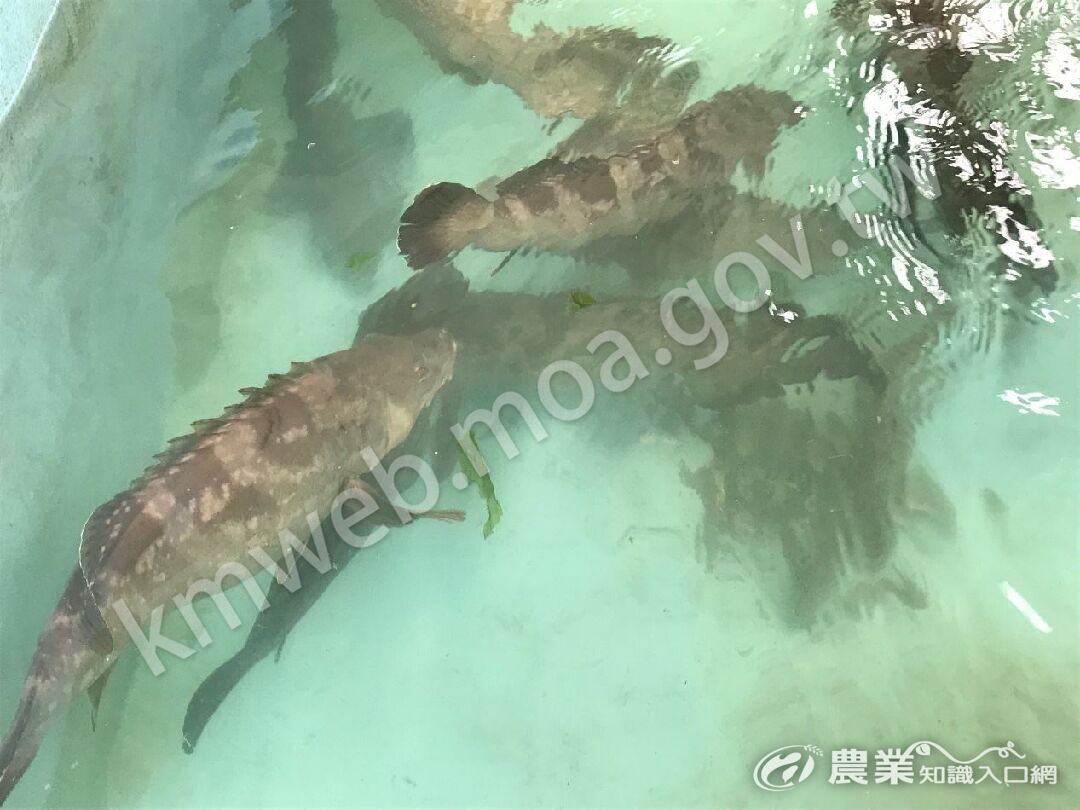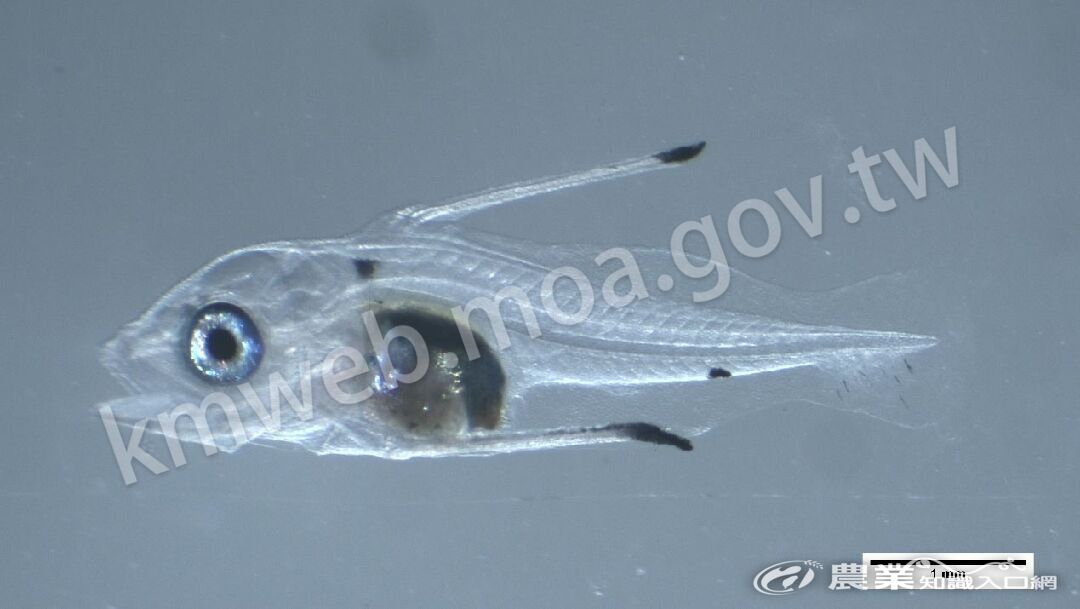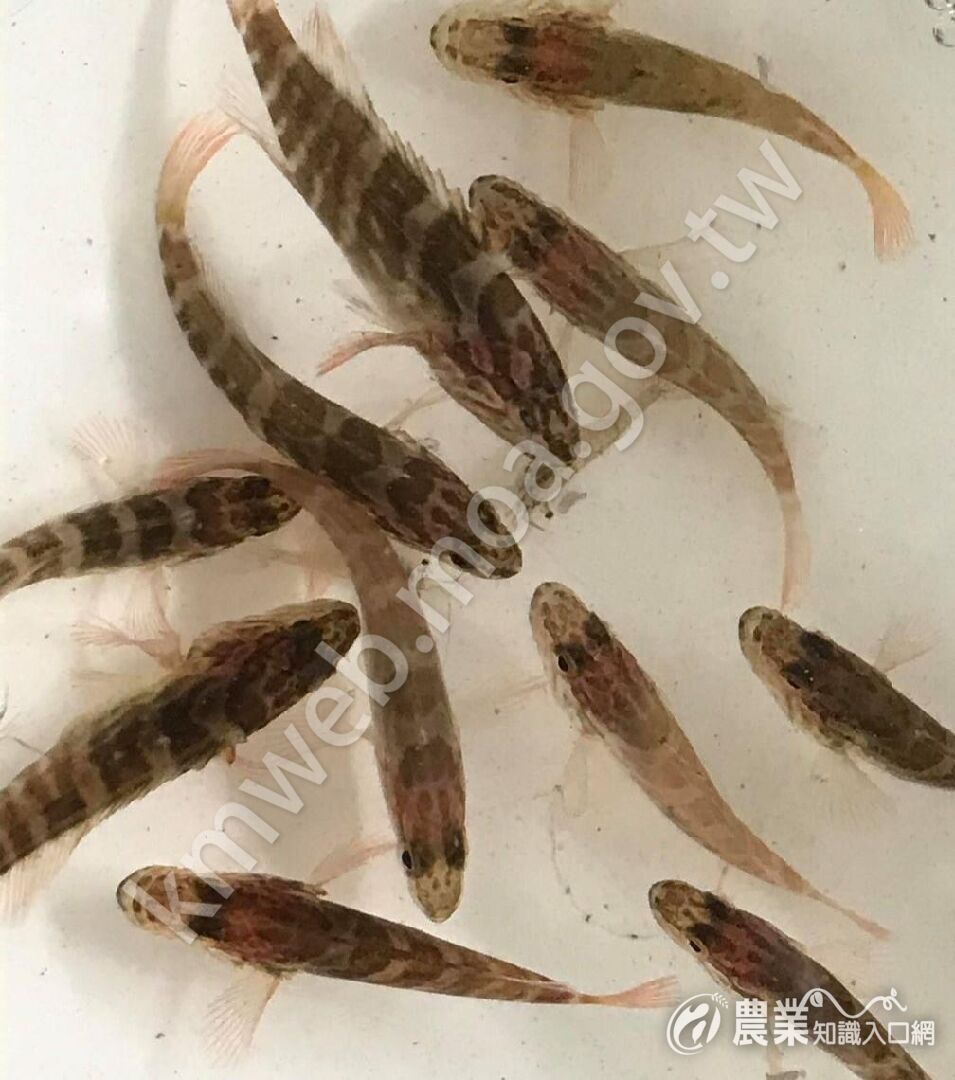
雲紋石斑魚(Epinephelus moara)俗稱正油斑、真油斑,英文俗名為kelp grouper,分類上屬於鱸形目(Perciformes)、鮨科(Serranidae)、石斑魚屬(Epinephelus),主要分布於西北太平洋,包含日本、韓國、臺灣及中國沿海,其肉質鮮美,具很高的經濟價值(650~800 NTD/kg)。雲紋石斑魚早期被認為是褐石斑魚(E. bruneus)的同種異名,直到近十年,中國學者分別以形態學、分子生物學及細胞遺傳學方法進行各項分析,才確認雲紋石斑魚為有效種。
中國對於雲紋石斑魚的人工繁養殖研究已相當透徹,而臺灣產業界雖曾經成功繁殖,但仍未普遍。水產試驗所海水養殖研究中心成功培育雲紋石斑魚,並建立人工繁殖技術,期盼能進一步大量生產並推廣至業界。
首先,挑選海水中心長期蓄養的成熟雲紋石斑魚之雌雄魚進行催熟,分別取得成熟卵粒及精液,再透過人工授精獲得受精卵。受精卵在160噸的水泥池培育,仔魚孵化後依序給予牡蠣受精卵、輪蟲及橈足類,育苗過程的水溫範圍為22~24℃、鹽度範圍35~36 psu。孵化後第10~12天,魚苗的背鰭及腹鰭硬棘開始延長(俗稱發翅);第30天延長的硬棘開始縮短(俗稱收翅),第45天,稚魚出現褐色條紋。



The kelp grouper (Epinephelus moara), belonging to the order Perciformes, family Serranidae, and genus Epinephelus, is mainly distributed in the northwestern Pacific Ocean, including Japan, Korea, Taiwan, and the coastal waters of China. This species has tender and delicious flesh and is of high economic value (650–800 NTD/kg). E. moara was once considered a synonym of the longtooth grouper (E. bruneus), but over the past decade, Chinese researchers have confirmed E. moara as a valid species based on analyses using morphological, molecular, and cytogenetic methods.
In China, studies on the artificial breeding and culture of E. moara have been well established. Although the aquaculture industry in Taiwan has previously achieved successful breeding, it has not yet become widespread. The Mariculture Research Center of the Fisheries Research Institute has successfully bred E. moara and established artificial propagation techniques, with the goal of achieving large-scale production and promoting its application in the aquaculture industry.
In the breeding process, mature male and female E. moara that have been reared long-term are selected for hormonal induction to obtain mature eggs and sperm, which are then used for artificial fertilization to produce fertilized eggs. The fertilized eggs are incubated in 160-ton concrete tanks. After hatching, the larvae are fed oyster fertilized eggs, rotifers, and copepods sequentially. During larval rearing, water temperature ranges from 22 to 24°C, and salinity ranges from 35 to 36 psu. On days 10–12 post-hatching, the dorsal and pelvic fin spines begin to elongate; by day 30, the elongated spines start to shorten, and by day 45, juveniles develop brown stripes.
禁止未經授權之複製或下載等用於營利行為,違者依法必究。 農業部 版權所有 © 2025 All Rights Reserved.
維護單位: 水產試驗所 最佳瀏覽狀態為 IE7.0 以上, 1024*768 解析度